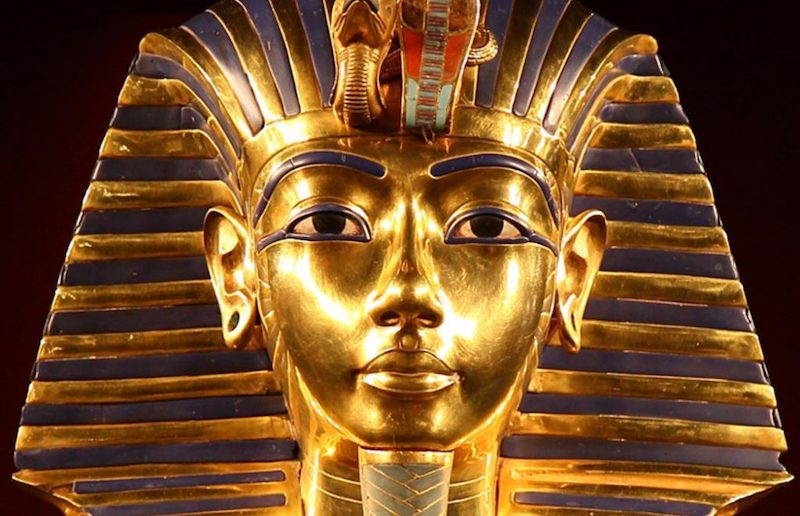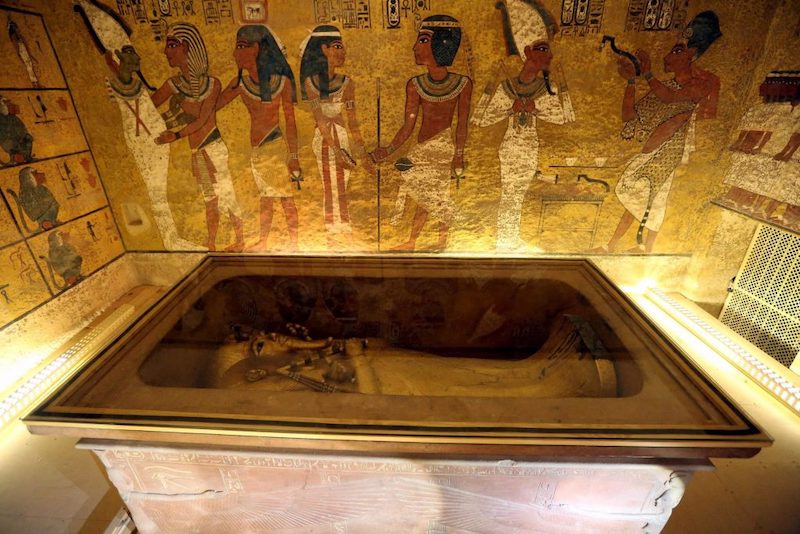Who was Pharaoh Tutankhamun?
If his dazzling tomb had not been discovered, King Tutankhamun (1341-1323 BC) would not have been so known to the whole world. Photo taken after the discovery of Tutankhamun's tomb in 1922.
Photo taken after the discovery of Tutankhamun's tomb in 1922.
He ascended the throne at the age of 9 and died at the age of 18. He reigned between 1332 BC and 1323 BC. When his father died, he ascended to the throne by marrying his half-sister from another mother, Ankhesenamen. The early years of his reign saw a return to Egypt's ancient polytheistic religion. He also took the name Tutankhamen instead of Tutankhaton.
( The Discovery of Tutankhamen in 1922 with 14 Colorized Photographs )
The rule of this child king was ordinary. When he ascended to the throne at the age of nine, the country was still shaken by the chaos caused by his deceased father Akhenaten's wrong decision to switch Egypt from its traditional polytheistic religion to a monotheistic religion. The royal advisor named Ay used the young king as a puppet to reverse Akhenaten's policy and bring the old gods back to their temples. Tutankhamen's death mask containing 10 kilograms of gold.
Tutankhamen's death mask containing 10 kilograms of gold.
Despite the numerous theories put forward, Tutankhamen's sudden death remains a mystery. Did he die of malaria? Was his broken leg gangrene? Maybe he had injured a hippo. King Tutankhamun was only 19 years old when he died. There are many studies and speculations about the cause of his untimely death. Hypotheses range from his assassination by his closest advisors, to a chariot accident or a disease such as malaria, to genetic bone problems (possibly due to his parents being closely related).
The autopsy performed on Tutankhamen's mummy in recent years allowed us to learn about his body. He had hips almost as wide as a young woman's, was unable to put one foot fully on the ground due to a crooked leg, and was toothy.
Some scientists interpret the fact that the king had several broken ribs when he died and that his heart was not mummified as crushing blows to his chest, possibly as a result of a hippo attack during a hunt. Whatever the cause of death, the king was buried hastily rather than being quickly forgotten. Tutankhamun's burial chamber.
Tutankhamun's burial chamber.
In 1922, after 3,000 years, archaeologist Howard Carter unearthed Tutankhamen's tomb in the Valley of the Kings. The discovery made headlines around the world. What impressed people the most was not Tutankhamen's tomb but those buried with him. Carter described them as “a strange and wonderful collection of unusual and beautiful objects.”
The largest and perhaps most iconic treasure was the king's death mask, which contained almost 10 kilos of gold. Other objects buried with him to ensure he would remain powerful and wealthy in his afterlife included a leopard-skin cloak, four game boards, six chariots, 30 wine vessels and 46 bows. It took Carter almost a decade to list these 5,398 grave goods. Carter and a worker examine the solid gold coffin.
Carter and a worker examine the solid gold coffin.
Many valuable items were found in Tutankhamun's tomb. However, the most important find that has surprised scientists among these valuable items is a valuable dagger made of meteorite iron, because it is a matter of great curiosity why the Ancient Egyptians used such an unusual source for the metal of the dagger when there was plenty of iron in the world.
Although Tutankhamun is believed to be the son of Pharaoh Akhenaten and Queen Kiya, one of his royal secondary wives, uncertainties remain. A study published in 2010, based on analysis of a DNA sample taken from King Tut's mummy, revealed that his parents were siblings.
Thanks to his striking tomb, King Tutankhamun aroused great interest and contributed more to Egyptian history than any other pharaoh did during his lifetime.
Source:
https://arkeofili.com/firavun-tutankamon-kimdi/

































